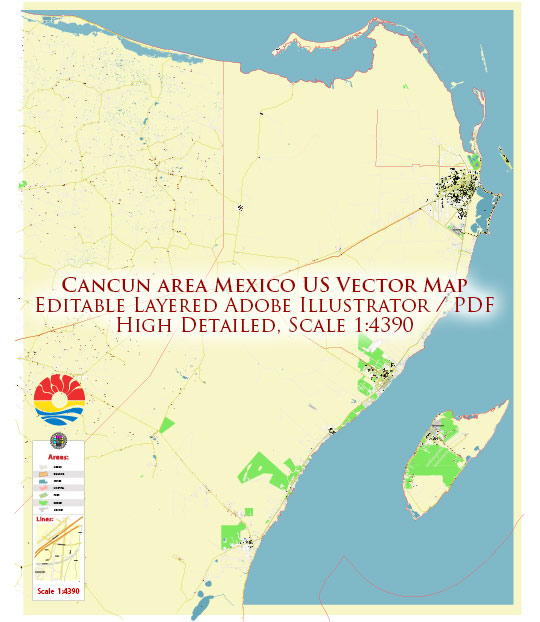Cancun, a popular tourist destination located on the eastern coast of Mexico’s Yucatan Peninsula, has a relatively short but fascinating history of urban development. The area’s history is closely tied to its transformation from a small fishing village to a world-renowned tourist hotspot.
- Pre-Hispanic Era: Before the arrival of the Spanish, the Yucatan Peninsula was inhabited by the Maya civilization for thousands of years. However, the site of present-day Cancun was sparsely populated and primarily used by the Maya for fishing and maritime trade. The Maya city of Tulum, located to the south of Cancun, was one of the notable settlements in the region.
- Early Spanish Colonization: The Spanish arrived in the Yucatan Peninsula in the early 16th century. The area that is now Cancun was largely ignored by the Spanish conquerors and remained a relatively insignificant outpost.
- 20th Century Development: Cancun’s modern history as a city began in the 20th century. The Mexican government recognized the tourism potential of the area and decided to develop Cancun as a tourist destination. In the early 1970s, a plan was formulated to create a purpose-built tourist resort on the Yucatan Peninsula.
- Infrastructure and Tourism Development: To support the rapid growth of tourism, extensive infrastructure development took place in Cancun. This included the construction of hotels, resorts, restaurants, and an international airport. The government invested heavily in creating a world-class destination with beautiful beaches, clear waters, and modern amenities.
- Environmental Concerns: As Cancun’s popularity grew, so did concerns about its environmental impact. The construction and tourism development have raised issues related to coastal erosion, overdevelopment, and damage to the region’s natural ecosystems, including the Mesoamerican Barrier Reef.
- Economy and Tourism: Cancun’s economy is now heavily reliant on tourism, and it has become one of the most visited destinations in the world. The city offers a wide range of attractions, including Mayan ruins, water sports, vibrant nightlife, and cultural experiences.
- Modern Challenges: In recent years, Cancun has faced challenges such as drug-related violence and security concerns. Additionally, environmental sustainability and protection of natural resources have become important issues as the region tries to balance economic development with the preservation of its unique ecosystem.
Cancun’s history of urban development is a story of transformation from a quiet fishing village to a global tourism hub. The city’s growth has been remarkable, but it also comes with challenges and responsibilities in terms of managing its impact on the environment and local communities.


 Author: Kirill Shrayber, Ph.D.
Author: Kirill Shrayber, Ph.D.